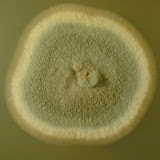The Sick Building Syndrome Symposium held during the American Academy of Forensic Science(AAFS)meeting last week in DC was a overwhelming success. It ran two days and included over 12 speakers. Each day the session filled up. I would estimate that over 200 people showed up over the course of the two days. Talks ranged from standard indoor air investigations for mold and other non-biological particles to the psychology and health effects of poor indoor air quality. I discussed the use of DNA to detect 36 species of mold from settled dust indoors. Below is a list of topics and presenters.
Thursday's Sessions:
Opening Remarks by Session Organizer, Walter E. Goldstein, PhD, MBA, PE
Multidisciplinary Symposium on Sick Building Syndrome.
by David M. Benjamin, PhD
Studies of Building Related Asthma and Respiratory Symptoms in Relation to Dampness and Microbial Contamination of Indoor Environments.
by Jean M. Cox-Ganser, PhD
Psychiatric Issues in Toxic Building Syndrome.
by Joseph N. Kenan, MD and Daniel A. Martell, PhD
Forensic Investigations on Mold Growth in Damp Buildings.
by Philip R. Morey, PhD
Sick Building Syndrome.
by Gary R. Brown, BS
Mold and Moisture Control-EPA Voluntary Guidance.
by Laura Kolb, MPH
The Analysis of Microbial Volatile Organic Chemicals From Mold Using Air Canisters and Gas Chromatography.
by Jack Cochran, BS
Friday's Session (I was the moderator)
Summary of First Half-Day Presentations and Second Half Day Agenda.
by Walter E. Goldstein, PhD, MBA, PE
Sampling for Airborne and Surface-Associated Microorgansims.
Mark Buttner, PhD
A Rapid High Volume Sampler for Trace VOCs Collection in the Field.
by Brian A. Eckenrode, PhD
Analysis of Bioaerosol Samples.
by Patricia Cruz, PhD. Presented by Mark Buttner, PhD
Use of Microscopy in the Sick Building Syndrome Investigations.
by James Millette, PhD
ERMI and MSQPCR: State-of-the-Art DNA Mold Diagnostics for Use in the Science of Building Forensics.
by Edward A. Sobek, PhD
Panel Discussion- Potential Solutions to Sick Building Syndrome Challenges.
Included all Speakers that were present
Monday, February 25, 2008
Sick building Syndrome Symposium
Labels:
DNA,
ERMI,
indoor air,
mold,
MSQPCR,
QPCR,
sick building syndrome,
VOC
Subscribe to:
Post Comments (Atom)

No comments:
Post a Comment